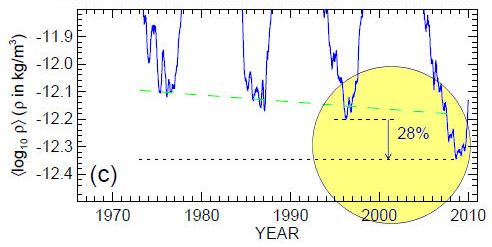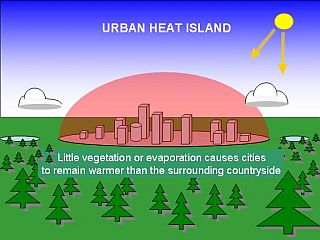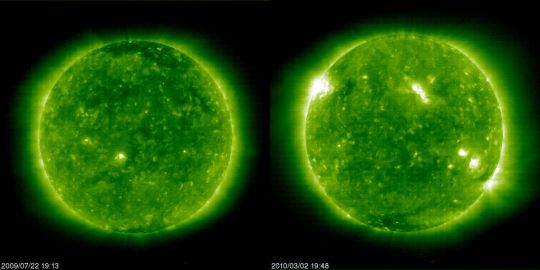Just wait for all the Chicken Little types to try and blame this obviously solar-related phenomenon on Anthropogenic CO2 production. From NASA Science:
A Puzzling Collapse of Earth’s Upper Atmosphere
July 15, 2010: NASA-funded researchers are monitoring a big event in our planet’s atmosphere. High above Earth’s surface where the atmosphere meets space, a rarefied layer of gas called “the thermosphere” recently collapsed and now is rebounding again.
“This is the biggest contraction of the thermosphere in at least 43 years,” says John Emmert of the Naval Research Lab, lead author of a paper announcing the finding in the June 19th issue of the Geophysical Research Letters (GRL). “It’s a Space Age record.”
Image: Atmospheric Density over time.The collapse happened during the deep solar minimum of 2008-2009—a fact which comes as little surprise to researchers. The thermosphere always cools and contracts when solar activity is low. In this case, however, the magnitude of the collapse was two to three times greater than low solar activity could explain.
“Something is going on that we do not understand,” says Emmert.
Gee . . . Ya think?





 For many citizens in the USA, this has been a winter for the ages. From no end of storms in the Southwest to record-breaking snow in the Northeast, this has been one long winter. But in Arizona and Florida, the boys of summer are dusting off their bats and balls and spring training is now underway. Fans are flocking back to the ballparks, and our consumption of peanuts is on the rise. American will eat more than 600 million pounds of peanuts this year at ballparks around the country (and elsewhere), we will eat over 700 million pounds of peanut butter, and we will spend over four billion dollars on our peanut habit.
For many citizens in the USA, this has been a winter for the ages. From no end of storms in the Southwest to record-breaking snow in the Northeast, this has been one long winter. But in Arizona and Florida, the boys of summer are dusting off their bats and balls and spring training is now underway. Fans are flocking back to the ballparks, and our consumption of peanuts is on the rise. American will eat more than 600 million pounds of peanuts this year at ballparks around the country (and elsewhere), we will eat over 700 million pounds of peanut butter, and we will spend over four billion dollars on our peanut habit.